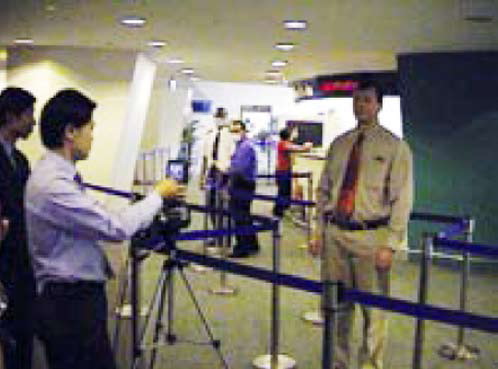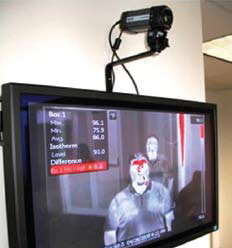
-
Application Stories
• Building
• Furnace and Boiler Tube Inspection
• Medical
กล้องอินฟราเรดตรวจอุณหภูมิร่างกาย FLIR A320
Viral and bacterial infections that spread through human contact and airborne transmission pose a serious health problem, including the possibility of pandemics, as shown by recent flu outbreaks.
Minimizing the spread of infections
Infrared thermography can help detect elevated body temperatures which may indicate the presence of a fever. As such, the use of thermal imaging as an adjunctive diagnostic tool to help detect those persons with a potential fever may contain or limit the spread of viral diseases such as bird and swine flu, or bacterial infections such as SARS.
The growth of international travel and economic migration require a consistent, prompt, effective and global disease prevention policy. Elevated human body temperature, or fever, is often times a reliable indicator of many serious infections. Since the recent outbreak of serious flu strains such as H1N1, and the spread of severe acute respiratory syndrome (SARS), public health authorities have been looking for a fast, easy, contactless ( noninvasive), and reliable method to detect elevated human body temperature. When used properly, thermal imaging screening is such a method: a vital tool in the detection of elevated body temperatures in high-risk groups such as travelers. It is being used by health authorities around the world to screen passengers entering a country via mass transportation, and has proven itself as an effective monitoring method.


(Left) Fixed-mount A320 w/full thermal "color alarming" in progress. On the right, setting up a ThermaCAM with Automatic Temperature Compensator (ATC)for elevated body temperature detection
- Home
- |
- Products
- |
- Training
- |
- Application |
- Image Gallery |
- Contact Us
Copyright ©2012 - Thermoscan Co., Ltd. - All Rights Reserved.
Thermoscan Co., Ltd. (บริษัท เทอร์โมสแกน จำกัด)
731 PM Tower, 5th Floor, Asok Dindaeng Road, Dindaeng, Dindaeng, Bangkok 10400
Tel: (02) 642-9489 Fax: (02) 642-9424
E-mail: tms@thermoscan.co.th
